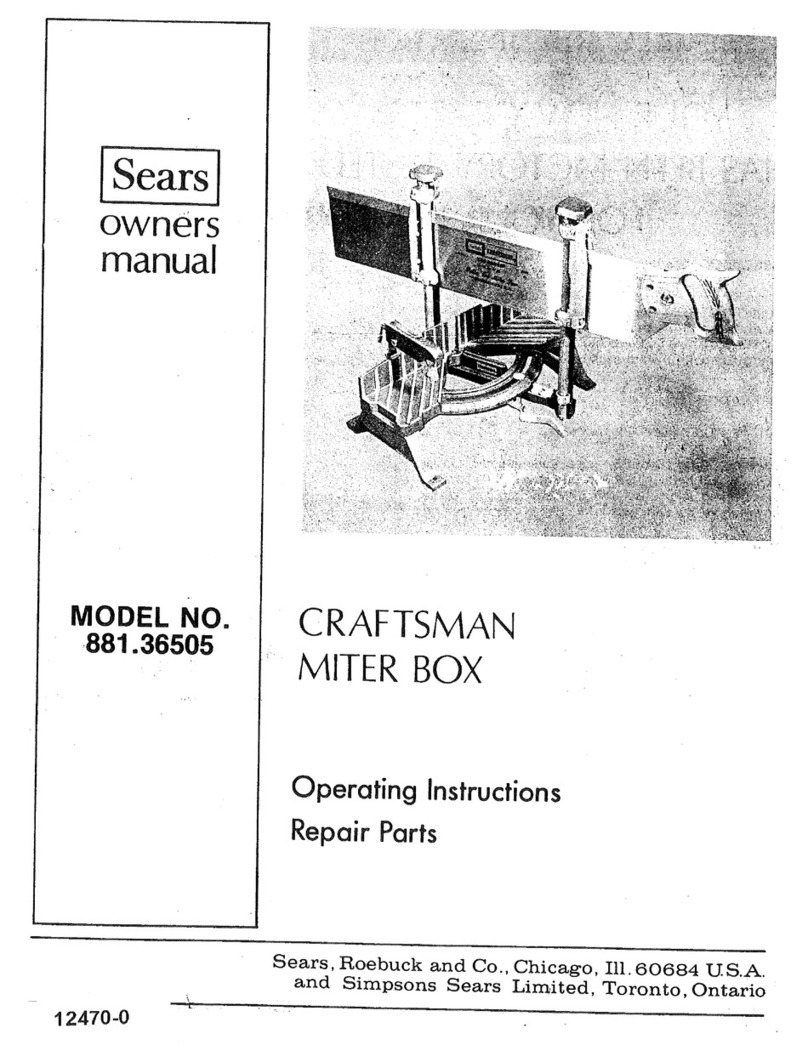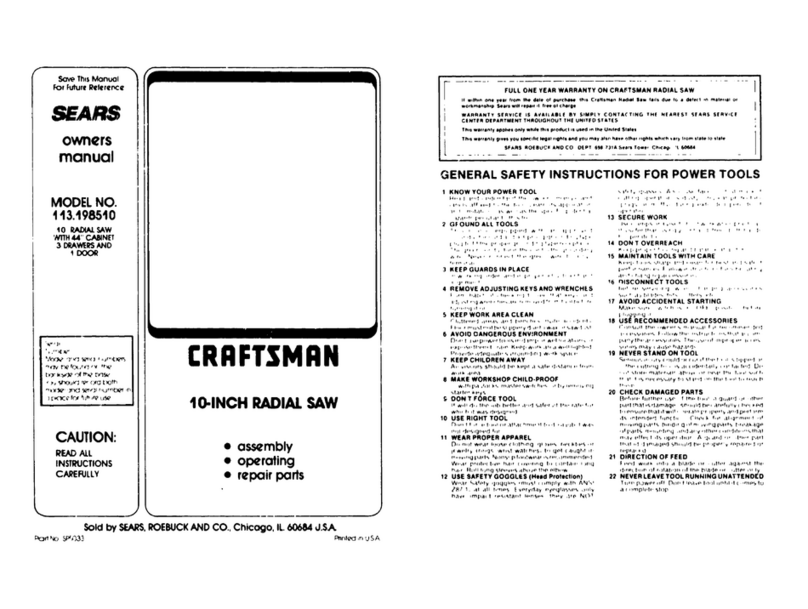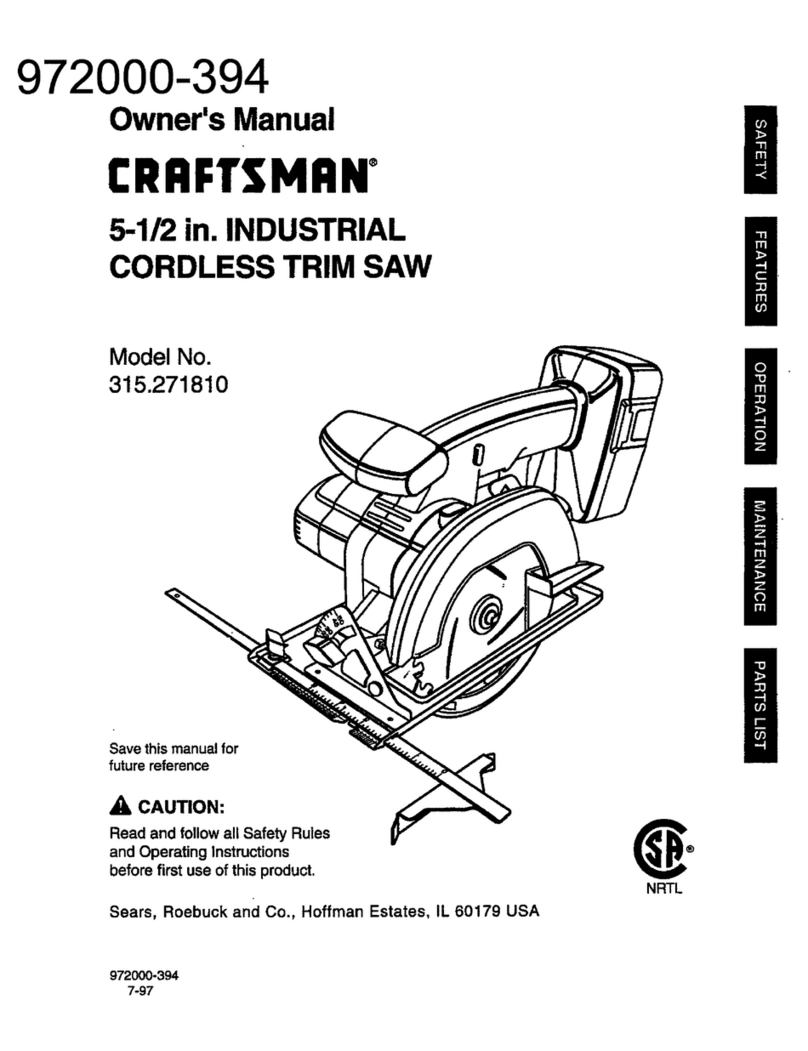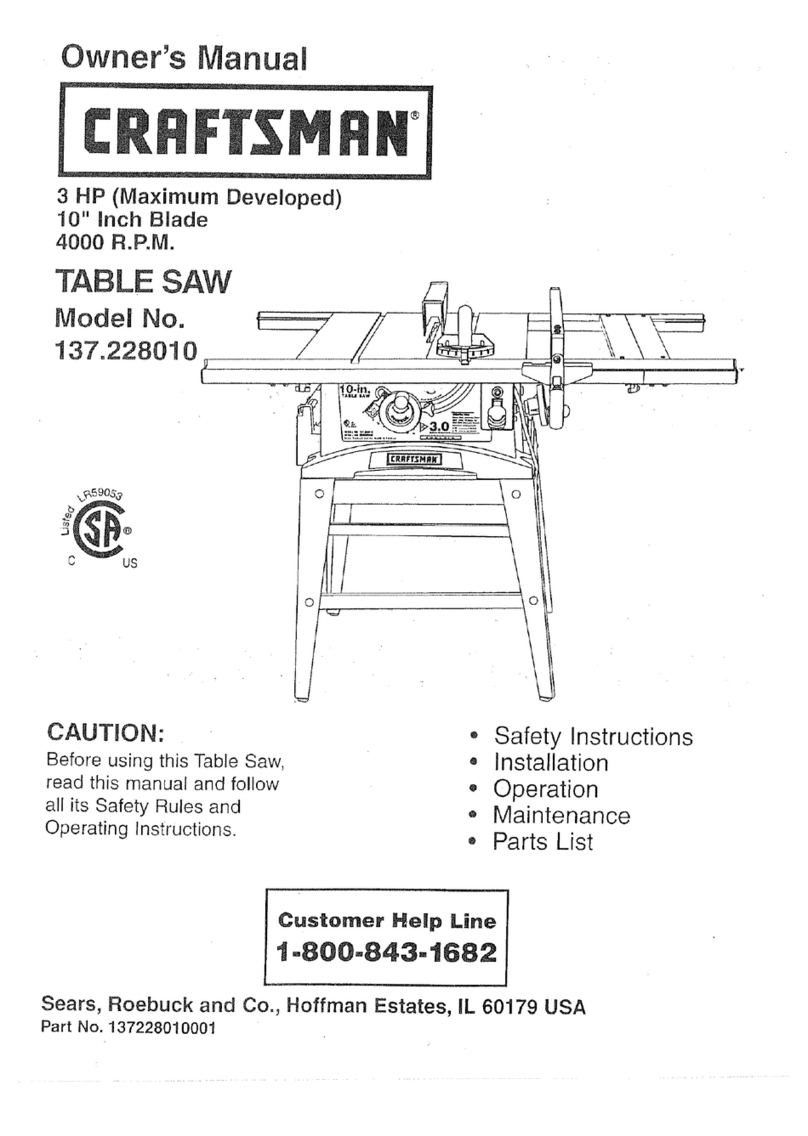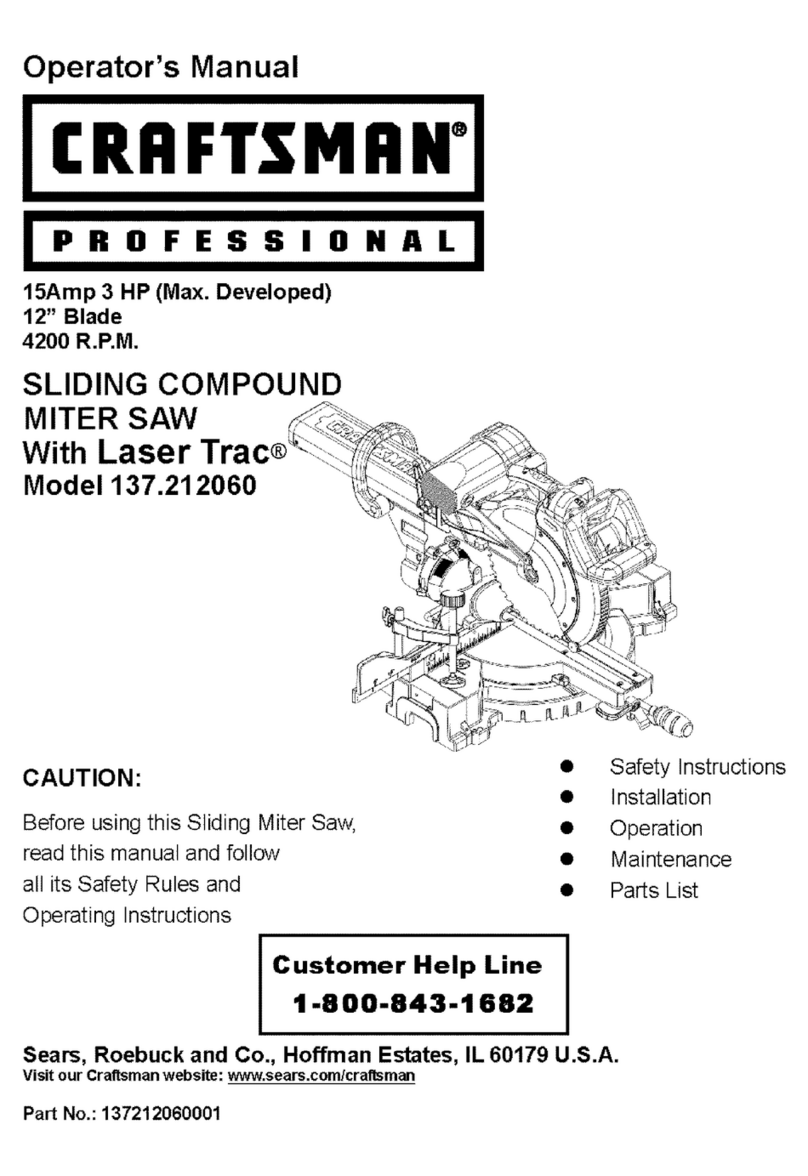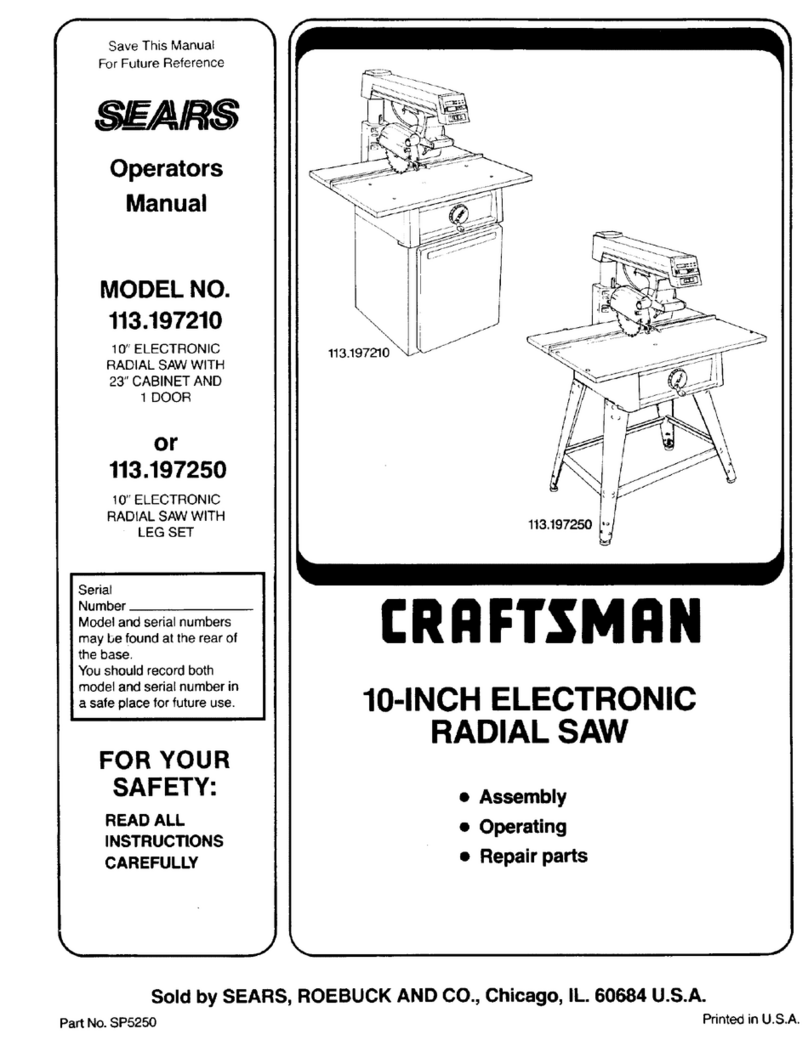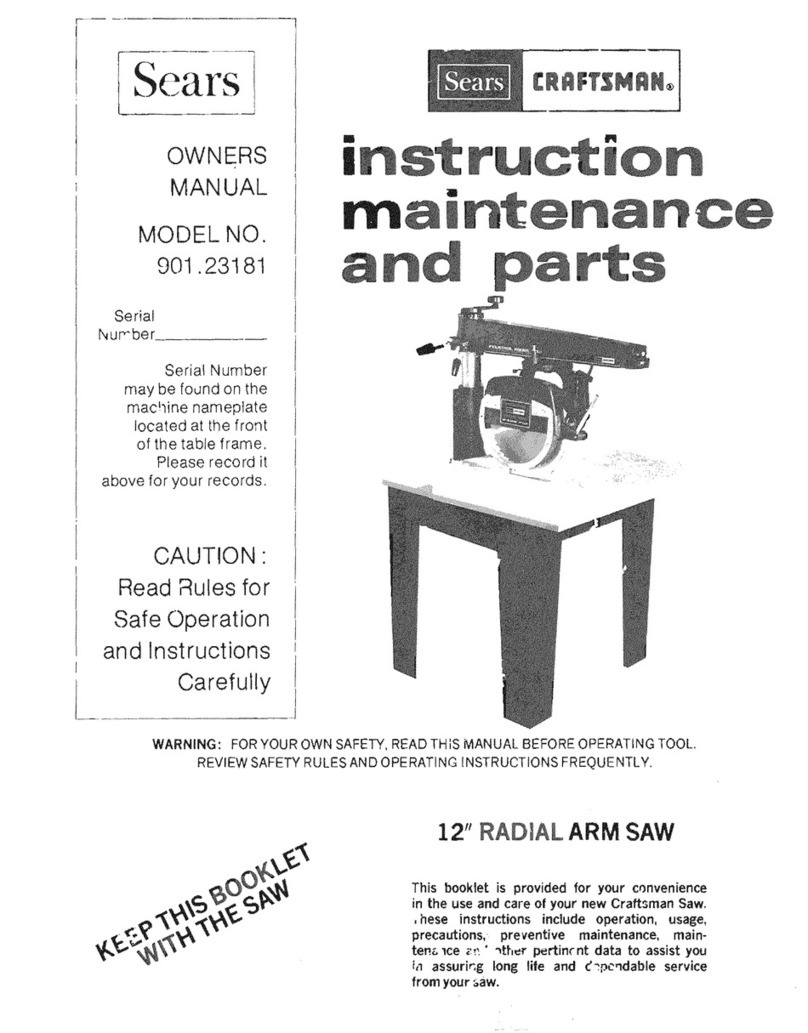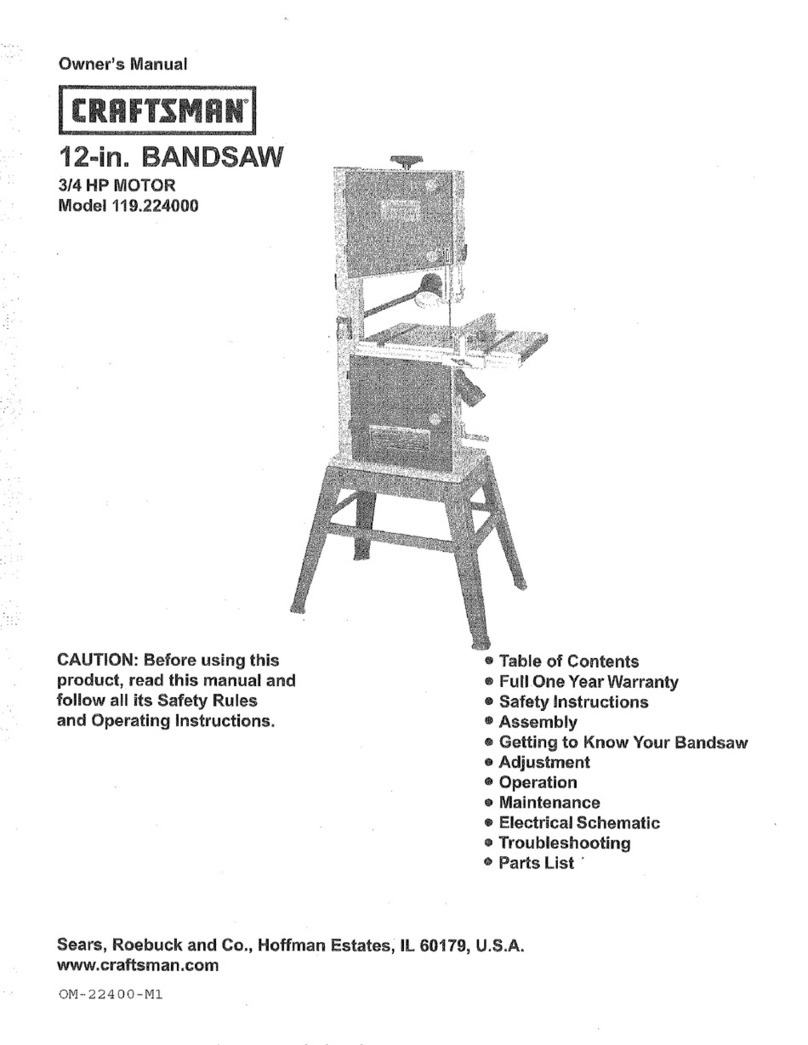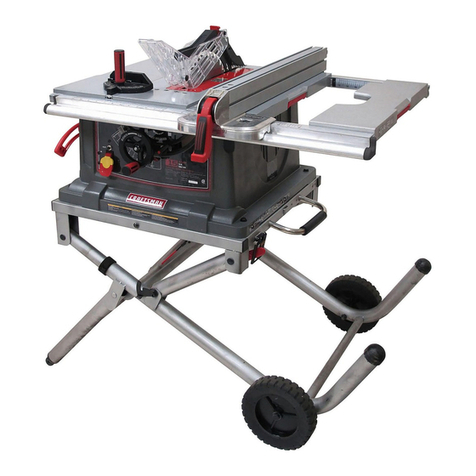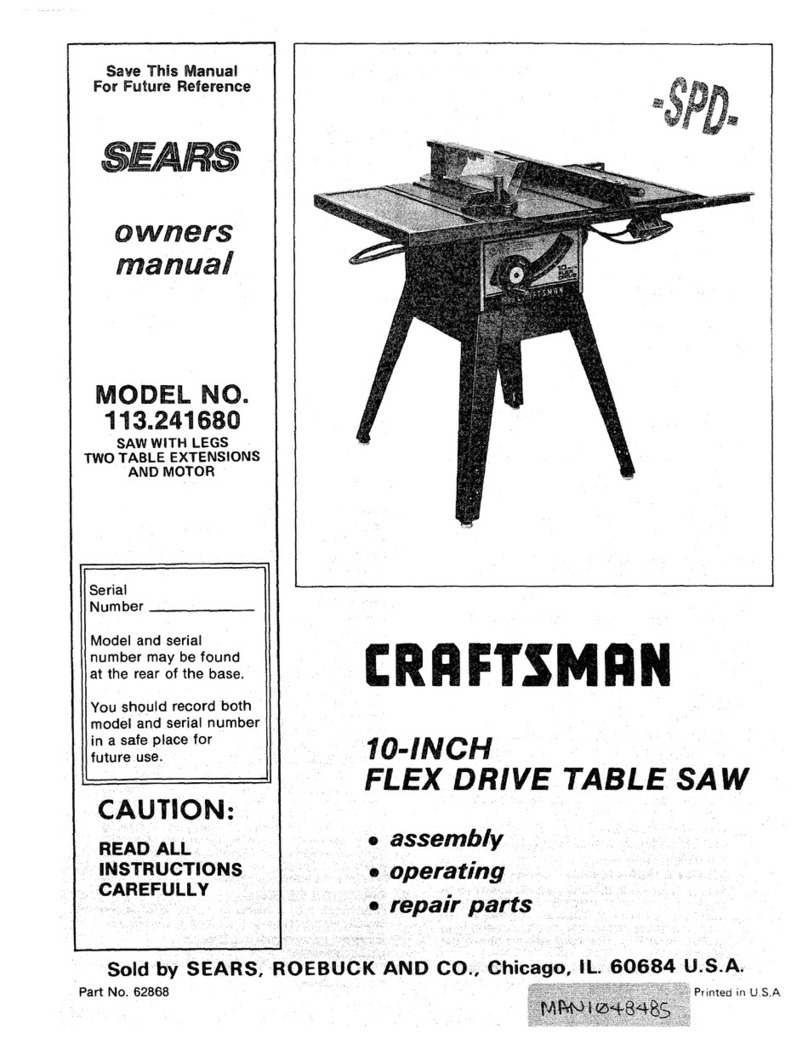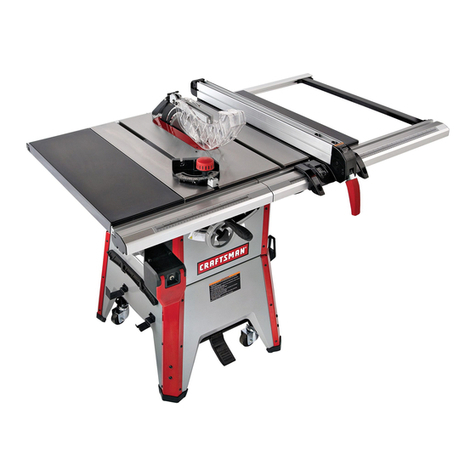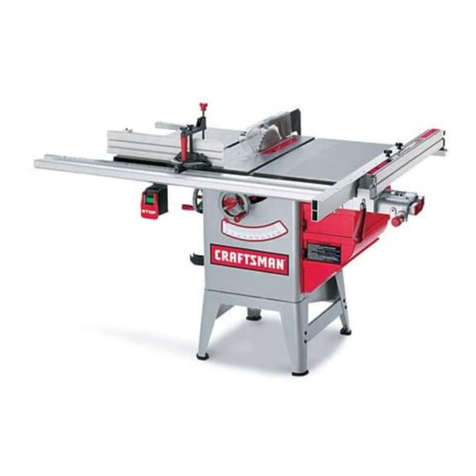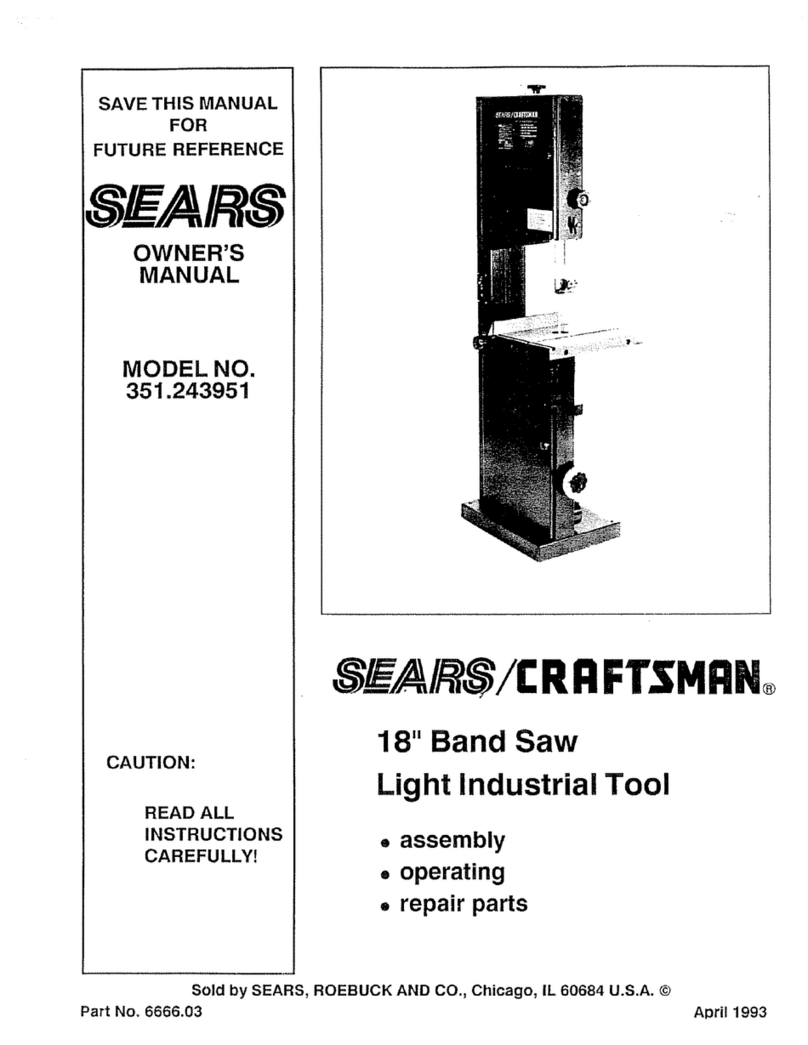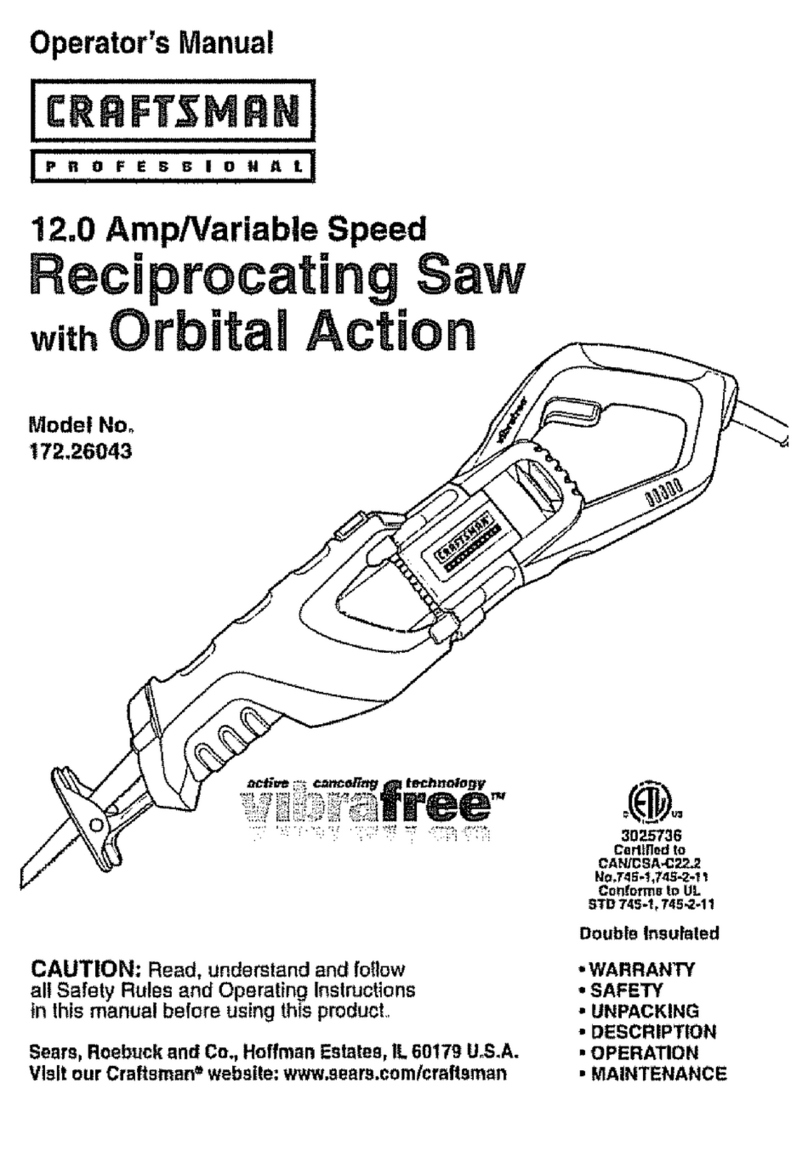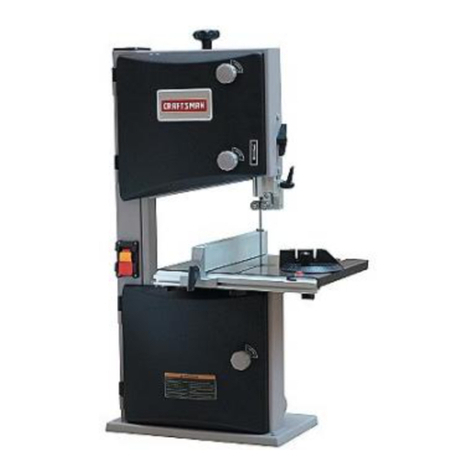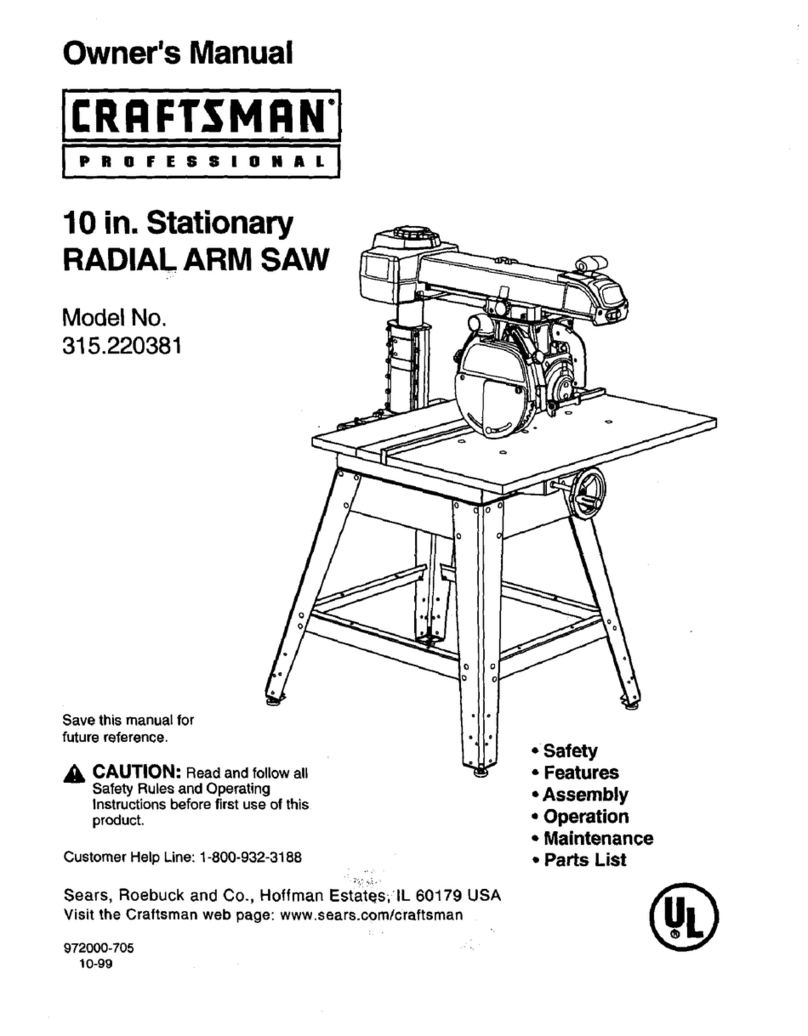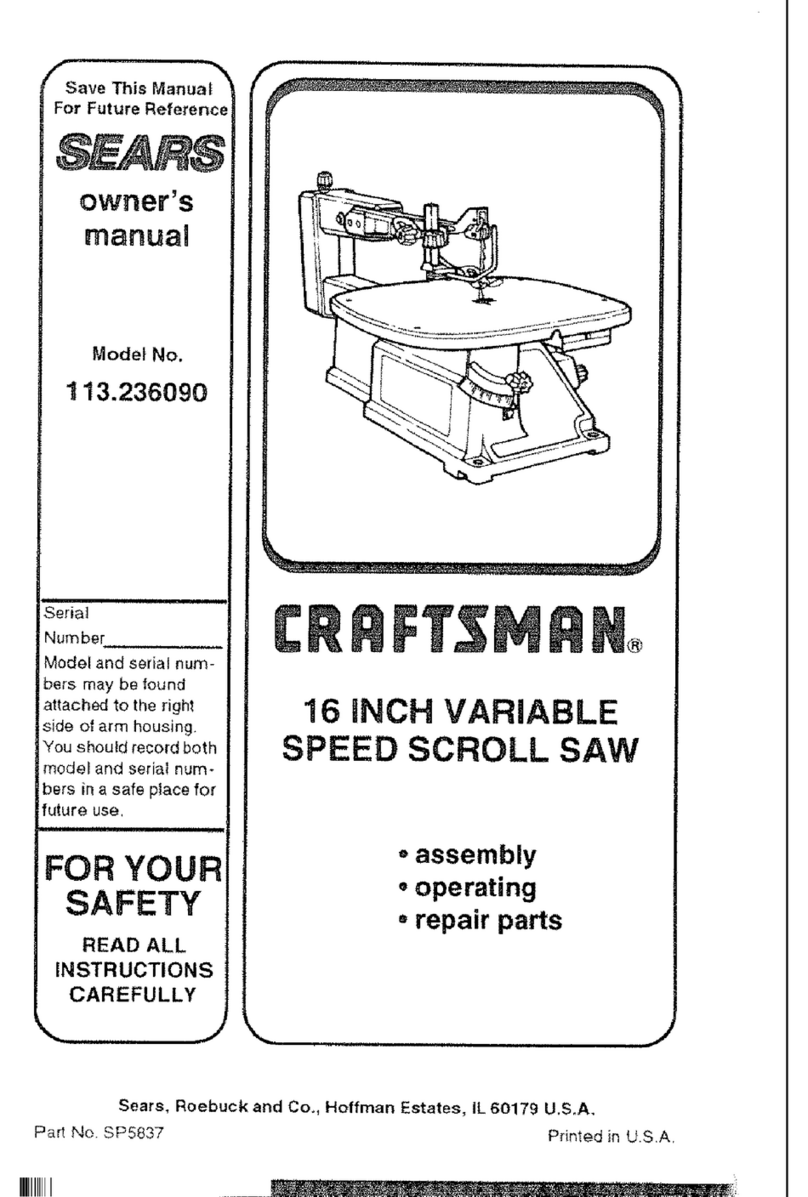.The Table Leveling Screw should stop the table
at right angles to the blade. See figure 3. Check
with an accurate square. If the table is not square
adjustment of the leveling screw
necessary. Tighten the lock nut securely
after turning the screw.
~45 ° STOP
SCREW
TABLE TILT
PROTRACTOR
FIGURE 3.
4. The 45 ° Stop Screw should stop the table at an
angle of 45 ° to the blade. See figure 3. Check
carefully, if adjustment is necessary, tighten the
lock nut securely after turning the screw. It may
be necessary to reset the pointer to indicate the
proper angle on the tilt scale.
5. The Miter Protractor must be square with the bar
when the pointer shows 90 ° on the protractor
scale. Check with an accurate square and reset
the pointer if necessary.
6. The Table Insert should be flush with the table
surface. To-adjust, loosen the two slotted head
screws (X-532) which you can see from the top
of the insert. You will find four small set screws
(X115) coming up through from the bottom of
the table, two against the front and two against
the rear of the insert. By turning these four
screws slightly, the insert may be leveled and
brought flush with the table surface.
CARE OF THE BLADE:
The blade supplied with this bench saw will give
many hours of efficient cutting service in the average
home workshop without requiring sharpening. When
the teeth become blunted and dull, and adefinite de-
crease in cutting efficiency is noted, the blade may be
put hack in good condition again as follows:
1. Raise the table until an oilstone laid on the table
surface will just touch the teeth of the blade. Turn
the blade backwards by hand until the ends of
all the small cutting teeth have been touched and
are the same length.
2. With an 8 inch round edge mill file, file the gullets
(space between the teeth) of all teeth of the same
shape to auniform depth and width. Maintain
the original shape, bevels, and dimensions. Avoid
sharp corners and nicks in the gullets.
.The top one-quarter of each cutting tooth should
be set at an angle of approximately 10 degrees.
set should be uniform and should alternate
!lt to right on successive teeth. T_he large
require no set--they should be kept
bapproximately 1/64 inch shorter than the cutting
teeth.
File the bevel of each cutting tooth--I 5 to 20
degrees bevel on the inside front face of each
tooth. Maintain the original bevel angle and be
careful not to shorten the teeth,
Blade Wobble is often noticed at slow speeds
starting or stopping the saw. If this does not
at full speed, check the saw blade and
amp washers for dirt or saw dust on the clamping
'rfaces.
Gummy residue can generally be removed with
'ERATION:
provided with this saw may be used for
both cross-cutting and ripping. However, if continu-
ous ripping or continuous cross cutting is planned,
a rip blade or cross cut blade will operate much more
efficiently.
For proper chip clearance and best general results,
the blade should project through the work-piece
approximately I_ inch.
Saw warped stock with the concave or hollow face
do'*v'n.
Support long work as it leaves the rear of the table.
Avoid back tracking on a cut.
Do not force material into the blade too fast. Use
astraight, direct, steady feed which does not over-
tax the cutting capacity of the blade.
SAFETY:
While the bench saw is one of the most widely used
woodshop power tools, it is by nature of its general
design, one of the most dangerous in the hands of
inexperienced or careless operators. The bench saw
is not, however, an unsafe tool when used with com-
mon sense and good judgment.
Use a push block rather than letting the hands get
closer than 3inches to the blade on narrow cuts.
Keep the splitter in place whenever possible. Never
hold the hands over the blade when making blind
groove type cuts. Stand to one side when completing
a cut. A loose piece caught by the blade can fly
back with surprising force.
Always stop the saw when removing waste stock
from near the blade, when making adjustments, or
when changing settings.
Do not wear dangling neck ties, loose baggy
sleeves, etc., while operating power tools.
The guard is supplied with this saw for your safety
--use it to its best advantagel
ACCESSORIES for this saw will be listed in your
catalog or can be obtained from your nearest Sears
Retail Store. An interesting and instructive booklet
entitled "The Circular Saw" is also .available. It
explains many handy special operations which may
be performed on your bench saw.
